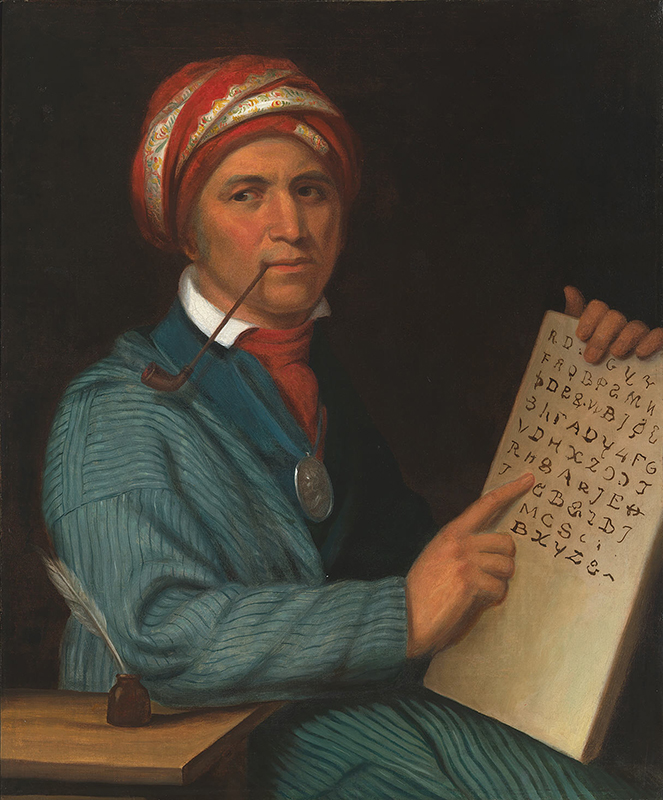Sequoyah (c. 1770–c. 1843)

Sequoyah, c. 1770–c. 1843 | Born Cherokee town of Tuskegee, eastern Tennessee | Henry Inman (1801–1846), after Charles Bird King | Oil on canvas, c. 1830 | NPG.79.174
Sequoyah, the son of a Cherokee chief’s daughter and a fur trader from Virginia, was a warrior, a linguist and, some say, a silversmith. For twelve years, he worked to devise a method of writing for the Cherokee language. His syllabary of eighty-five symbols representing vowel and consonant sounds was approved by the Cherokee chiefs in 1821. The simple utilitarian system made possible a rapid spread of literacy throughout the Cherokee nation. Medicine men set down ceremonies as well as traditional ball games; missionaries translated hymns and the New Testament into Cherokee; and in 1828 the Cherokee Phoenix, a weekly bilingual newspaper, began publication at New Echota, Georgia.
This portrait of Sequoyah, painted by Henry Inman, after a painting by Charles Bird King, was made when he was in Washington, D.C., in 1828 to negotiate a treaty on behalf of the Cherokee nation. King’s original portrait was part of a larger effort conceived by Thomas Loraine McKenney, Commissioner of Indian Affairs from 1824 to 1830, to record the cultures and prominent figures of the American Indian nations. McKenney’s collection eventually grew to include more than 140 portraits of American Indian leaders. Hand colored lithographs were made of the paintings and compiled into the three volume book series, History of the Indian Tribes of North America.
Henry Inman copied the original portraits as part of the lithographing process. McKenney was clearly pleased with Inman’s work. He declared that the copies were “more impressive than any thing I ever saw. Inman you know is a Master.” King’s originals later belonged to the Smithsonian Institution, where they remained on display until a fire destroyed most of them in 1865.
- Describe Sequoyah’s clothing. How does it compare to other clothing of the day? What might his clothing tell us about his place in society or culture?
- What objects do you notice? What might they tell us about Sequoyah and his contribution?
- Consider Sequoyah's pose. What is he doing, and how can we connect his pose to his biography?
- Consider the utility of a written language. How are communities able to use them to their benefit?